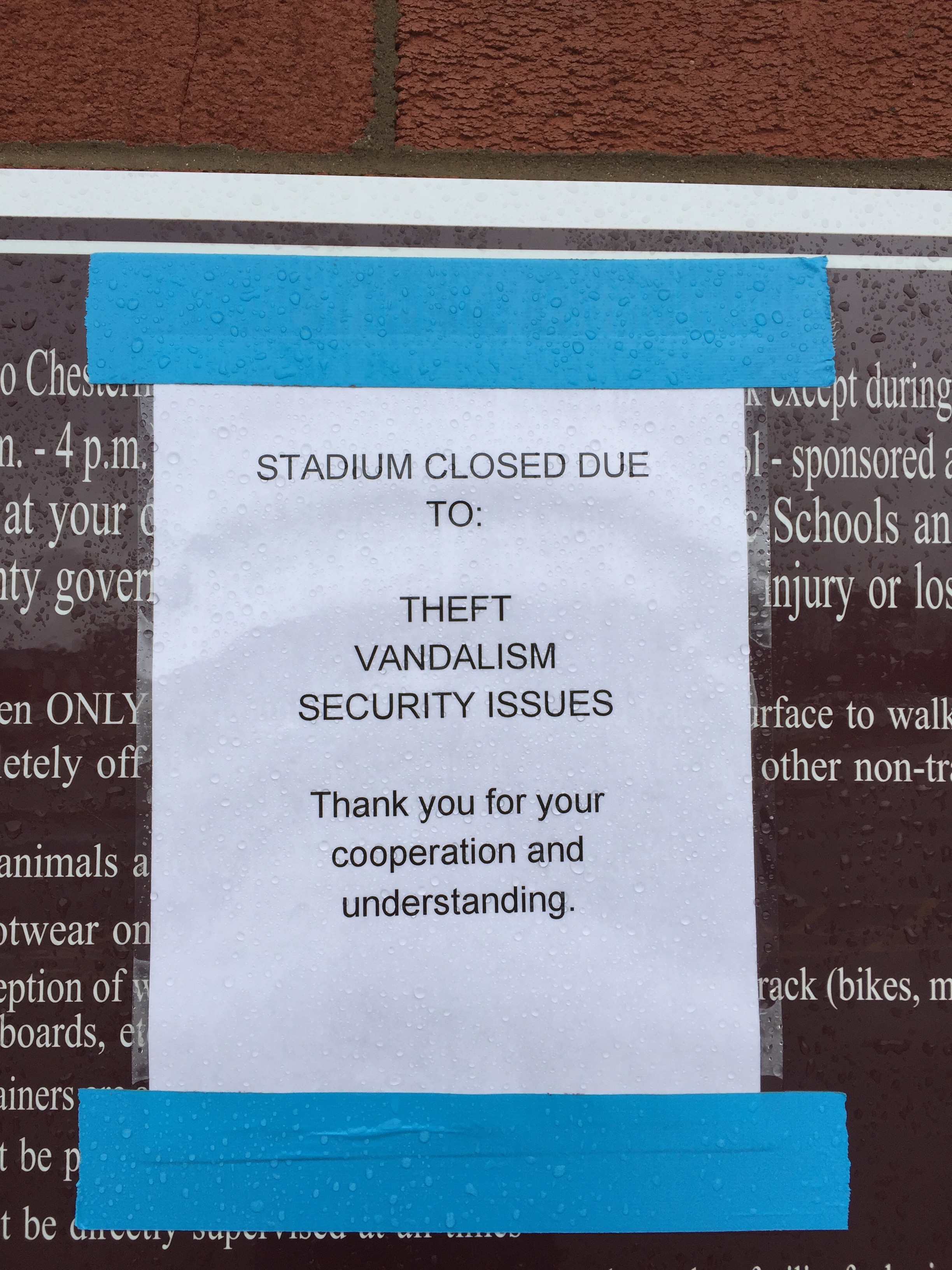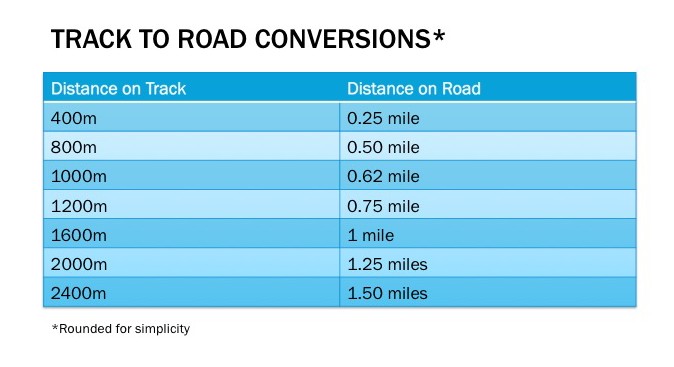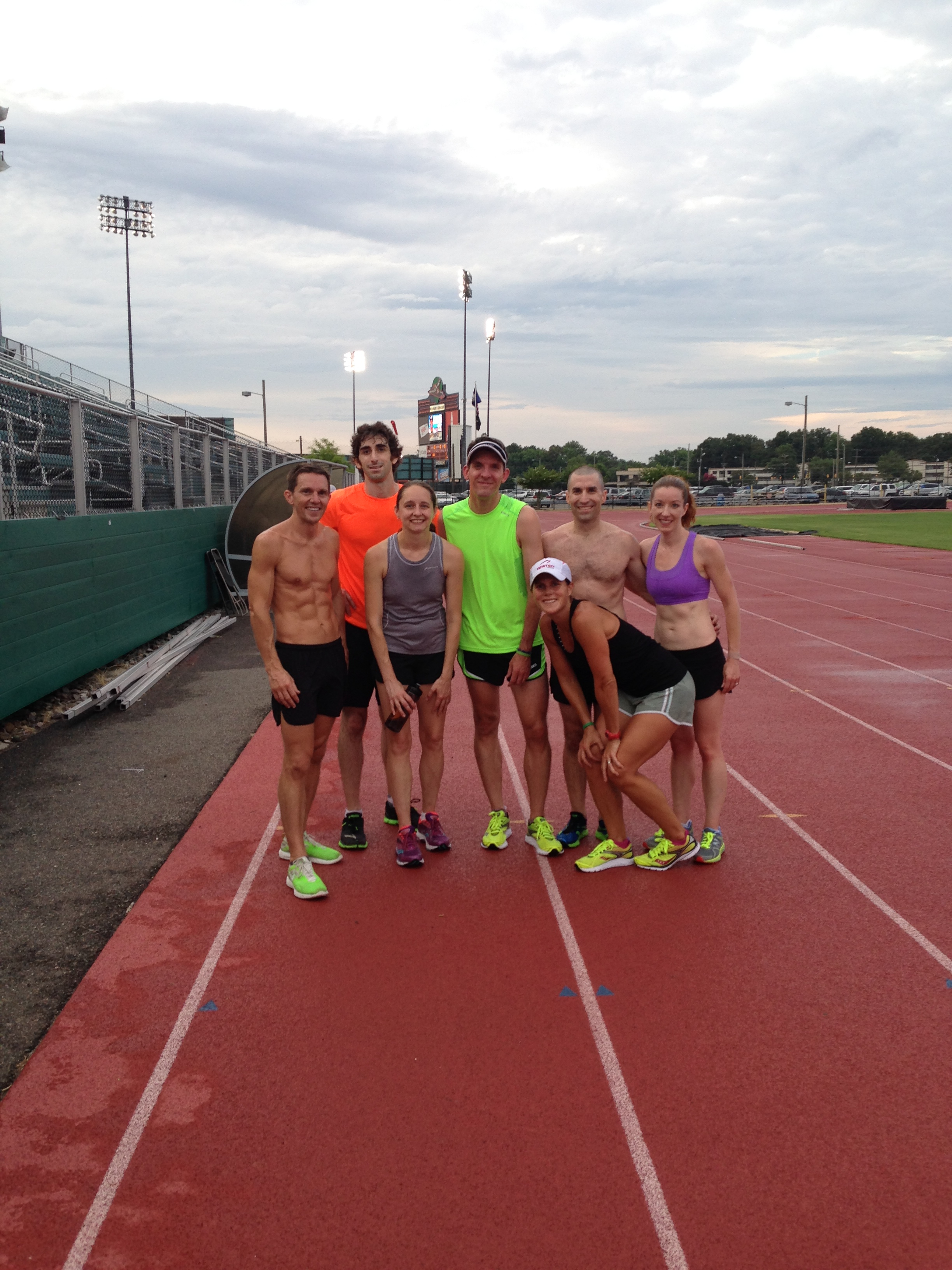Trials of the Track-less: How to run track workouts without a track
/The 2 mile warmup was uneventful. I was a little nervous about the workout but excited to get my legs back on the track and see what I could do. At 5:30am my running buddy and I reached the school, ran up the sidewalk and came to an abrupt halt as our headlamps illuminated the sign on the fence:

Well, time for Plan B. With no desire to run back home to drive 20 minutes to another track, and my type-A runner personality demanding that I find a way to complete the workout, it was time to improvise. So we did. We figured the empty high school parking lot was big enough (and relatively flat enough) to make do. A quick math-on-the-run calculation and we had our new marching orders:
Original workout: 2 mile warm-up, 2k (6:45/mile), 1600m (6:30/mile), 1k (6:25/mile), 800m (1:35/400m), 400m (FAO = HARD) ea w/ 400m easy to recover, 2 mile cool-down
Actual workout: 2 mile warm-up, 1.25 mi (6:41), 1 mi (6:27), 0.7mi (6:17), 0.52 mi (6:03), 0.28mi (5:39*) *downhill on this part
Around and around that parking lot we went - sneaking glances at our watches as we wove in between the deserted rows of spaces. We left the parking lot with a strange sense of satisfaction from having not only completed the workout, but having refused to let the closed track defeat us. I don't know how long the track will remained closed. Weeks? Months? Indefinitely? But I do know that I can get in my workouts without it. It may not be as pretty, but they'll get done. So for those of you who are in the same boat, take heart:
How to run track workouts without a track
- Find the flat: Flat road, that is! You'll want to find a section of road that's relatively flat for you to do your intervals. If you are forced to run somewhere with changes in elevation, try to ensure that you can complete a circuit of the road to incorporate both the uphill and downhill areas. If you can't find a flat place to run don't stress, but do realize that you'll have more variation in the paces you'll see on your watch.
- Convert the intervals: The standard track distances don't line up exactly with the distances in miles, but it's pretty close. For ease of use I've made a chart (slightly rounding up/down as needed to make things simpler) that can help you make the conversion:

- Utilize the "Custom Workout" feature on your watch: I LOVE this tool on my Garmin. You can set up each interval and rest time in between and then just run. Each interval is different you say? No problem - Garmin has you covered. Your watch will beep when you start/end each interval, removing the need for you to keep glancing at your watch to check distance.
- Swap shorter intervals: Once you get down to around the 400m range or shorter, watches are notoriously fickle. It's such a short distance that it's difficult to get accurate pace and distance on the road. Your best bet here may be to swap out the 400m repeats with a set time duration (i.e. run 90 sec HARD) or swap 200m repeats for strides (30 sec HARD, 30 sec recovery).
- Run longer intervals: Since shorter intervals are so fickle on the watch, it's a great opportunity to have your workout include some longer intervals. For marathoners, these are likely more useful anyway in encouraging the desired adaptations in the body. Half mile or mile repeats are great ways to get that "interval" feel on the road.
- Understand the limitations: When running intervals on the roads, unless you are on a measured course you are relying on your watch (and its communication with satellites...which are ridiculously far away) trying to pinpoint your location and calculate distance and pace accordingly. I know that my watch is always "faster" than what I actually run. When I use my watch on the track I'll hit the "Lap" button for each interval so that I'm getting an accurate time since my Garmin always measures that I've run longer than the actual distance I've run on the track. So I need to take that into account when running intervals. I'll often go a little longer on the roads (0.53mi vs. 0.5mi) to try and account for the margin of error.
- Train your brain: Your brain is tricky and will regulate the intensity of exercise so that you never fully exhaust yourself. This is why even if you feel miserable and slow dramatically in the last mile of a race, once that finish line is in sight your body is able to summon an extra kick and speed over the line - your brain has realized the end is in sight and removes the body's limitations on recruiting more muscle fibers. On a track, the end is always "in sight" - and you can push harder on intervals since your brain knows exactly when you can stop. (How many of you do what I do and manage to "make up" time on that last 200m on the track? Yes? :)) On the roads, without such visual cues you are forced to overcome the brain's governing abilities and continue to push even when your brain is telling you to stop. This skill pays dividends in races as you push through those middle miles.
And finally, don't despair. While the track is a wonderful way to practice pacing, and provides an even, softer surface, the reality is that most races we are training for are run on the uneven, unpredictable roads. So when you are running your 40th loop around the stupid parking lot, tell yourself this is awesome practice for your next race.







